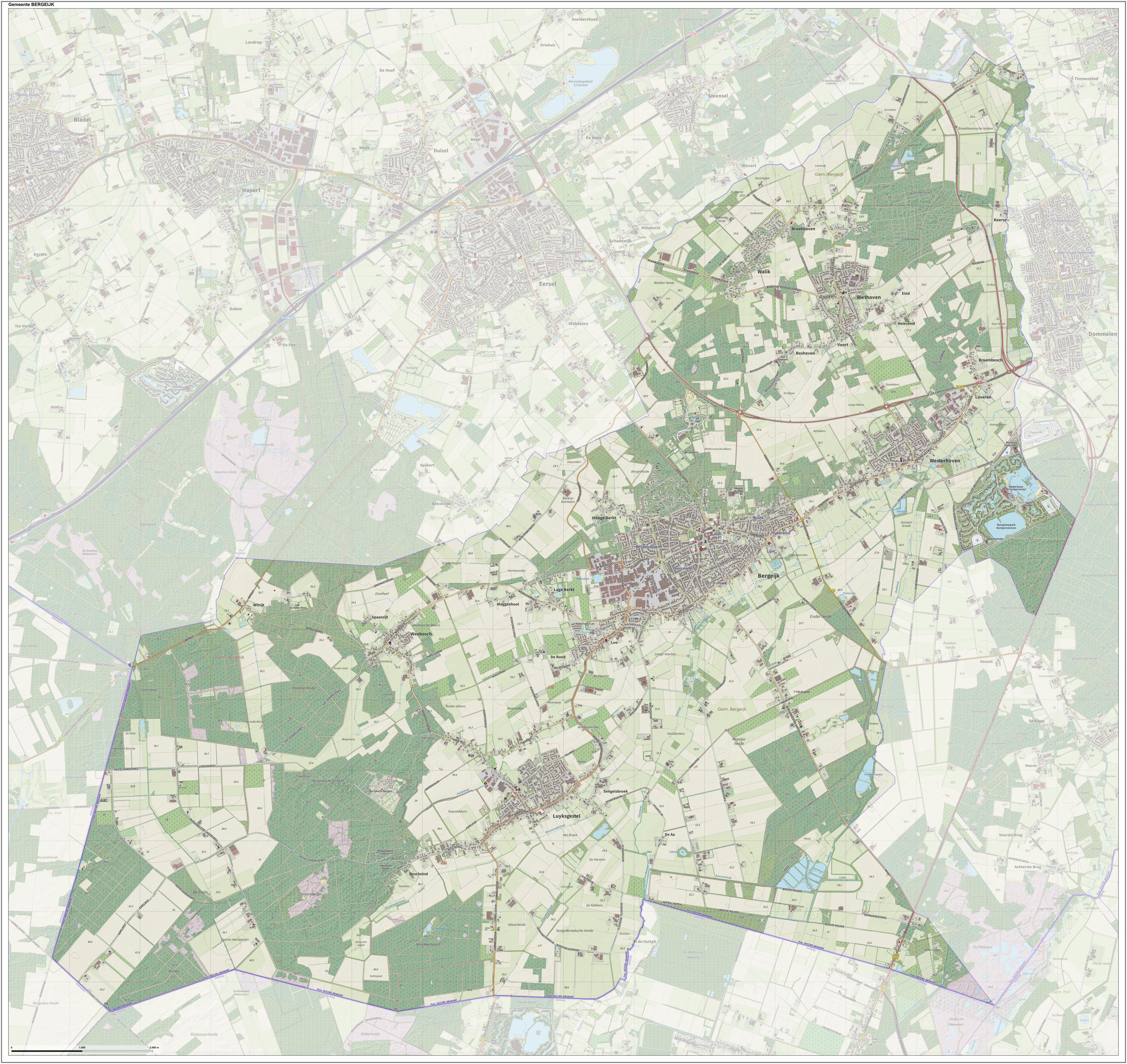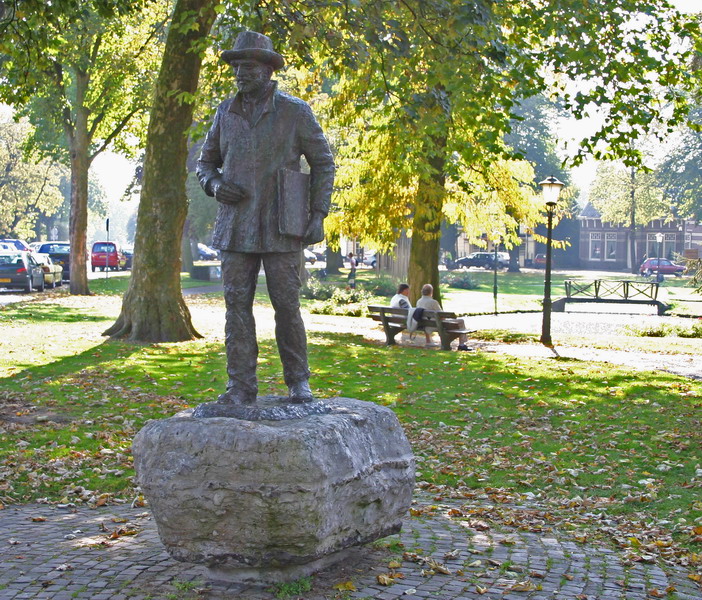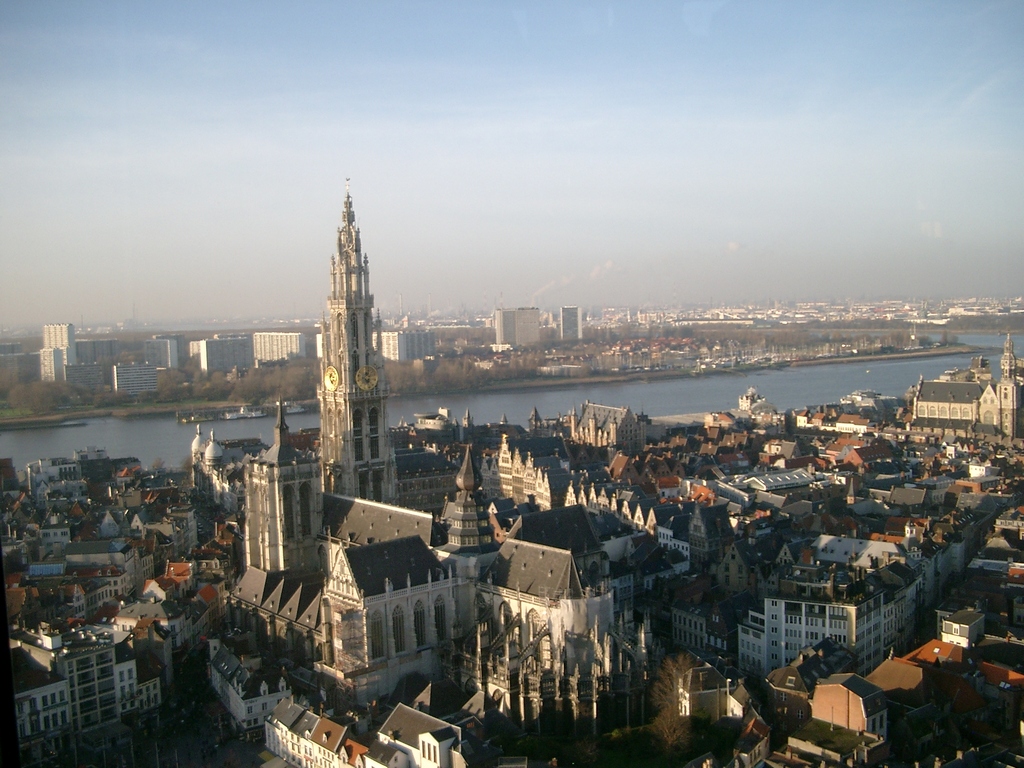|
Luyksgestel
Luyksgestel () is a village in the Netherlands. It is located in the province of North Brabant, within the municipality of Bergeijk. History It was first mentioned in 1343 as Gastel, and means "guest house". Luik (French: Liège) has been added to distinguish from Moergestel. For centuries, Luyksgestel was a part of the territories of the Southern Netherlands (present-day Belgium and surroundings). Until the French revolution it was an exclave of the Bishopric of Liège. Subsequently, until 1819, it belonged to the United kingdom of the Netherlands' province of Antwerp, and only then it was transferred to where it currently belongs: the province of North Brabant, in exchange for Lommel, a neighbouring Brabantian town that was put into the province of Limburg. Luyksgestel was a separate municipality until 1997, when it became part of the municipality Bergeijk. People Born in Luyksgestel Harrie Lavreysen Harrie Lavreysen (born 14 March 1997) is a Dutch track cyclist who c ... [...More Info...] [...Related Items...] OR: [Wikipedia] [Google] [Baidu] |
Bergeijk
Bergeijk ( ; ) is a Municipalities of the Netherlands, municipality and town in southern Netherlands, in the province of North Brabant. It consists of an area of and had a population of in . It is one of 21 municipalities, including Eindhoven, that make up the Eindhoven Region Cooperative (''Samenwerkingsverband Regio Eindhoven''). The spoken language is Kempenlands (an East Brabantian dialect, which is very similar to colloquial Dutch language, Dutch).Jos & Cor Swanenberg: Taal in stad en land: Oost-Brabants, Bergeijk has traditionally been an agriculture, agricultural area, but tourism and recreation are steadily gaining importance. Among the facilities in the municipality of Bergeijk is a bungalow park in the village Westerhoven. Bergeijk is known in the Netherlands as a Gerrit Rietveld, Rietveld village, for its architecture by De Stijl architect Gerrit Rietveld, and for a program on national radio: Radio Bergeijk, a parody on local radio. Population centres Topography ... [...More Info...] [...Related Items...] OR: [Wikipedia] [Google] [Baidu] |
Bergeijk Vlag
Bergeijk ( ; ) is a municipality and town in southern Netherlands, in the province of North Brabant. It consists of an area of and had a population of in . It is one of 21 municipalities, including Eindhoven, that make up the Eindhoven Region Cooperative (''Samenwerkingsverband Regio Eindhoven''). The spoken language is Kempenlands (an East Brabantian dialect, which is very similar to colloquial Dutch).Jos & Cor Swanenberg: Taal in stad en land: Oost-Brabants, Bergeijk has traditionally been an agricultural area, but tourism and recreation are steadily gaining importance. Among the facilities in the municipality of Bergeijk is a bungalow park in the village Westerhoven. Bergeijk is known in the Netherlands as a Rietveld village, for its architecture by De Stijl architect Gerrit Rietveld, and for a program on national radio: Radio Bergeijk, a parody on local radio. Population centres Topography ''Topographic map of the municipality of Bergeijk, June 2015.'' Notable ... [...More Info...] [...Related Items...] OR: [Wikipedia] [Google] [Baidu] |
North Brabant
North Brabant ( ; ), also unofficially called Brabant, Dutch Brabant or Hollandic Brabant, is a province in the south of the Netherlands. It borders the provinces of South Holland and Gelderland to the north, Limburg to the east, Zeeland to the west, and the Flemish provinces of Antwerp and Limburg to the south. The northern border follows the Meuse westward to its mouth in the Hollands Diep strait, part of the Rhine–Meuse–Scheldt delta. North Brabant had a population of about 2,626,000 as of January 2023. Major cities in North Brabant are Eindhoven (pop. 231,642), Tilburg (pop. 217,259), Breda (pop. 183,873), its provincial capital 's-Hertogenbosch (pop. 154,205), and Helmond (pop. 94,967) History The Duchy of Brabant was a state of the Holy Roman Empire established in 1183 or 1190. It developed from the Landgraviate of Brabant and formed the heart of the historic Low Countries, part of the Burgundian Netherlands from 1430 and of the Habsburg Netherlands f ... [...More Info...] [...Related Items...] OR: [Wikipedia] [Google] [Baidu] |
Harrie Lavreysen
Harrie Lavreysen (born 14 March 1997) is a Dutch track cyclist who competes in sprint events. He is a five-time Olympic gold medalist, having won the sprint and team sprint event at the 2020 Summer Olympics, and adding the sprint, the team sprint and the keirin titles at the 2024 Summer Olympics. He has won 16 World Championship titles, including six titles in the team sprint (2018–2021, 2023-2024), six consecutive titles in the individual sprint (2019–2024), three in the keirin (2020–2022), as well as one (2024) in the 1km time trial, making him the most successful track cyclist at World Championships of all time. His international debut was at the 2016 UEC European Track Championships The 2016 UEC European Track Championships was the seventh edition of the elite UEC European Track Championships in track cycling and took place at the Velodrome de Saint-Quentin-en-Yvelines in Saint-Quentin-en-Yvelines, France, between 19 and 23 ... in the team sprint event. He has s ... [...More Info...] [...Related Items...] OR: [Wikipedia] [Google] [Baidu] |
Moergestel
Moergestel () is a village in the Dutch province of North Brabant. It is located in the municipality of Oisterwijk, about 7 km East of Tilburg. History The village was first mentioned in 1147 as Gestele, and means "guest house". Moer (moorland / peat excavation settlement) was later added to distinguish from Luyksgestel. Moergestel started on a sandy ridge near the brook Reusel. It is started to develop when the roads from Tilburg to Eindhoven and Oisterwijk to Hilvarenbeek intersected in the village. The tower of the St John, the Baptish church dates from the 16th century. Later the church was added to the tower. Between 1930 and 1931, the church was replaced. The nameless grist mill A gristmill (also: grist mill, corn mill, flour mill, feed mill or feedmill) grinds cereal grain into flour and Wheat middlings, middlings. The term can refer to either the grinding mechanism or the building that holds it. Grist is grain that h ... of Moergestel was built in 1852. Some ... [...More Info...] [...Related Items...] OR: [Wikipedia] [Google] [Baidu] |
List Of Sovereign States
The following is a list providing an overview of sovereign states around the world with information on their status and recognition of their sovereignty. The 205 listed states can be divided into three categories based on membership within the United Nations System: 193 member states of the United Nations, UN member states, two United Nations General Assembly observers#Current non-member observers, UN General Assembly non-member observer states, and ten other states. The ''sovereignty dispute'' column indicates states having undisputed sovereignty (188 states, of which there are 187 UN member states and one UN General Assembly non-member observer state), states having disputed sovereignty (15 states, of which there are six UN member states, one UN General Assembly non-member observer state, and eight de facto states), and states having a political status of the Cook Islands and Niue, special political status (two states, both in associated state, free association with New ... [...More Info...] [...Related Items...] OR: [Wikipedia] [Google] [Baidu] |
Bishopric Of Liège
In church governance, a diocese or bishopric is the ecclesiastical district under the jurisdiction of a bishop. History In the later organization of the Roman Empire, the increasingly subdivided provinces were administratively associated in a larger unit, the diocese (Latin ''dioecesis'', from the Greek term διοίκησις, meaning "administration"). Christianity was given legal status in 313 with the Edict of Milan. Churches began to organize themselves into dioceses based on the civil dioceses, not on the larger regional imperial districts. These dioceses were often smaller than the provinces. Christianity was declared the Empire's official religion by Theodosius I in 380. Constantine I in 318 gave litigants the right to have court cases transferred from the civil courts to the bishops. This situation must have hardly survived Julian, 361–363. Episcopal courts are not heard of again in the East until 398 and in the West in 408. The quality of these courts was ... [...More Info...] [...Related Items...] OR: [Wikipedia] [Google] [Baidu] |
Populated Places In North Brabant
Population is a set of humans or other organisms in a given region or area. Governments conduct a census to quantify the resident population size within a given jurisdiction. The term is also applied to non-human animals, microorganisms, and plants, and has specific uses within such fields as ecology and genetics. Etymology The word ''population'' is derived from the Late Latin ''populatio'' (a people, a multitude), which itself is derived from the Latin word ''populus'' (a people). Use of the term Social sciences In sociology and population geography, population refers to a group of human beings with some predefined feature in common, such as location, race, ethnicity, nationality, or religion. Ecology In ecology, a population is a group of organisms of the same species which inhabit the same geographical area and are capable of interbreeding. The area of a sexual population is the area where interbreeding is possible between any opposite-sex pair within the ... [...More Info...] [...Related Items...] OR: [Wikipedia] [Google] [Baidu] |
Municipalities Of The Netherlands Disestablished In 1997
A municipality is usually a single administrative division having corporate status and powers of self-government or jurisdiction as granted by national and regional laws to which it is subordinate. The term ''municipality'' may also mean the governing body of a given municipality. A municipality is a general-purpose administrative subdivision, as opposed to a special-purpose district. The English word is derived from French , which in turn derives from the Latin , based on the word for social contract (), referring originally to the Latin communities that supplied Rome with troops in exchange for their own incorporation into the Roman state (granting Roman citizenship to the inhabitants) while permitting the communities to retain their own local governments (a limited autonomy). A municipality can be any political jurisdiction, from a sovereign state such as the Principality of Monaco, to a small village such as West Hampton Dunes, New York. The territory over which a municip ... [...More Info...] [...Related Items...] OR: [Wikipedia] [Google] [Baidu] |
Province Of Limburg (1815–39)
Limburg Province may refer to: *Limburg (Belgium) * Limburg (Netherlands) *Province of Limburg (1815–1839) Limburg (, ) was one of the provinces of the United Kingdom of the Netherlands and later Belgium. The province existed for the duration of the United Kingdom, from 1815 to 1830, and for the first years after Belgian independence, from 1830 to ..., a former province of the United Kingdom of the Netherlands {{geodis Province name disambiguation pages ... [...More Info...] [...Related Items...] OR: [Wikipedia] [Google] [Baidu] |
Lommel
Lommel () is a municipality and city in the Belgian province of Limburg. Lying in the Kempen, it has about 34,000 inhabitants and is part of the arrondissement of Maaseik. Besides the residential town, Lommel also has a number of nature reserves, such as the nature reserve De Watering, the Lommel Sahara, and numerous forests and heathlands. Lommel is the third shopping city in Belgian Limburg with a commercial and shopping center ''De Singel''. Importantly, the silver sand that is mined here for the benefit of the glass industry. Some sand mining quarries are transformed into nature reserves and recreational areas, including Lommel Sahara. The city of Lommel is in the watershed of the basins of the Scheldt, and Meuse, and within these basins Nete Dommel respectively. Tamar, a maternity home for pregnant girls and unmarried mothers and their children run by the Congregation of Kindsheid Jesu, is located in Lommel. Despite its religious mission to help young women, Tamar was ... [...More Info...] [...Related Items...] OR: [Wikipedia] [Google] [Baidu] |
Antwerp (province)
Antwerp Province (; ; ; ), between 1815 and 1830 known as Central Brabant ( , , ), is the northernmost province both of the Flemish Region, also called Flanders, and of Belgium. It borders on the North Brabant province of the Netherlands to the north and the Belgian provinces of Limburg, Flemish Brabant and East Flanders. Its capital is Antwerp, which includes the Port of Antwerp, the second-largest seaport in Europe. It has an area of , and with over 1.92 million inhabitants as of January 2024, is the country's most populous province. The province consists of three arrondissements: Antwerp, Mechelen and Turnhout. The eastern part of the province comprises the main part of the Campine region. History During the early Middle Ages the region was part of the Frankish Empire, which was divided into several '' pagi''. The territory of the present-day province belonged to several ''pagi'' of which the region around what would become the city of Antwerp belonged to the Pagus Rene ... [...More Info...] [...Related Items...] OR: [Wikipedia] [Google] [Baidu] |





